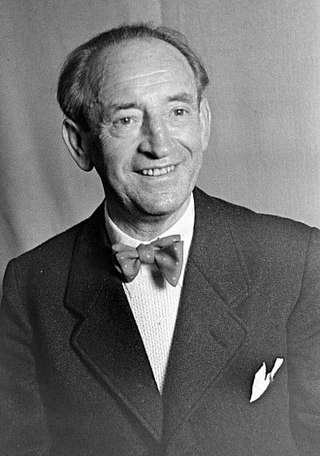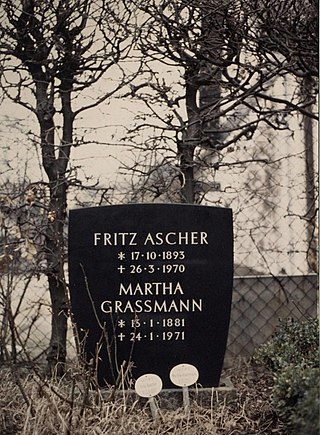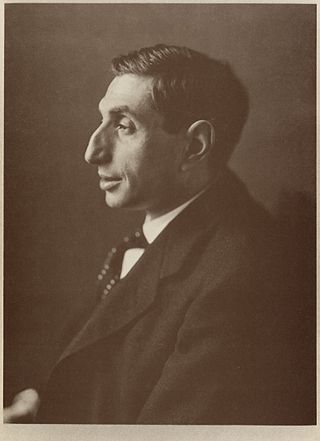
Edvard Munch was a Norwegian painter. His 1893 work The Scream has become one of Western art's most acclaimed images.

Hugo Laurenz August Hofmann von Hofmannsthal was an Austrian novelist, librettist, poet, dramatist, narrator, and essayist.

The Scream is a composition created by Norwegian artist Edvard Munch in 1893. The Norwegian name of the piece is Skrik (Scream), and the German title under which it was first exhibited is Der Schrei der Natur. The agonized face in the painting has become one of the most iconic images in art, seen as symbolizing the anxiety of the human condition. Munch's work, including The Scream, had a formative influence on the Expressionist movement.

The Österreichische Galerie Belvedere is a museum housed in the Belvedere palace, in Vienna, Austria.

Hermann Max Pechstein was a German expressionist painter and printmaker and a member of the Die Brücke group. He fought on the Western Front during World War I and his art was classified as Degenerate Art by the Nazis. More than 300 paintings were removed from German Museums during the Nazi era.

Karl Christian Ludwig Hofer or Carl Hofer was a German expressionist painter. He was director of the Berlin Academy of Fine Arts.

Aryanization was the Nazi term for the seizure of property from Jews and its transfer to non-Jews, and the forced expulsion of Jews from economic life in Nazi Germany, Axis-aligned states, and their occupied territories. It entailed the transfer of Jewish property into "Aryan" or non-Jewish hands.

The Berlin Secession was an art movement established in Germany on May 2, 1898. Formed in reaction to the Association of Berlin Artists, and the restrictions on contemporary art imposed by Kaiser Wilhelm II, 65 artists "seceded," demonstrating against the standards of academic or government-endorsed art. The movement is classified as a form of German Modernism, and came on the heels of several other secessions in Germany, including Jugendstil and the Munich Secession.

Fritz Ascher was a German artist, whose work is characterized by Expressionist and Symbolist sensitivity. In paintings, works on paper and poetry he explored existential questions and themes of contemporary social and cultural relevance, of spirituality and mythology. Ascher's expressive strokes and intense colors create emotionally intense and authentic work.
Georg Schäfer was a German industrialist and art collector. After his death, most of his art collection was housed in the Museum Georg Schäfer in Schweinfurt.
Thomas Fredrik Olsen (1897–1969) was a Norwegian ship-owner. Son of Fredrik Olsen and born in Hvitsten, he worked in the family company Fred. Olsen & Co. from 1920. He held a board position in a range of companies, including Det Norske Luftfartselskap and Scandinavian Airlines System. He is the father of shipping magnate Fred Olsen.

Alfred Flechtheim was a German Jewish art dealer, art collector, journalist and publisher persecuted by the Nazis.

Paul Westheim was a German art historian and publisher of the magazine Das Kunstblatt. The fate of Westheim's art collection, which was sold after his death by Charlotte Weidler, has been the subject of major art restitution lawsuits.

The art collection of Ismar Littmann (1878–1934), a German lawyer who lived in Breslau, comprised 347 paintings and watercolors and 5,814 drawings from artists such as Lovis Corinth, Max Pechstein, Erich Heckel, Max Liebermann, Käthe Kollwitz, Lucien Adrion, and Otto Mueller.
Max Silberberg was a major cultural figure in Breslau, a German Jewish entrepreneur, art collector and patron who was robbed and murdered by the Nazis. His art collection, among the finest of its era, has been the object of numerous restitution claims.

Curt Glaser was a German Jewish art historian, art critic and collector who was persecuted by the Nazis.

Paul Robert Ernst von Mendelssohn-Bartholdy was a German Jewish banker and art collector. The persecution of his family under the Nazis has resulted in numerous lawsuits for restitution.
Adolf Weinmüller was a German art dealer and Nazi party member who trafficked in looted art and Aryanized the S. Kende auction house as well as Helbing. The catalogs of his auctions were published in 2014 for provenance research and restitution to victims.
Alexander Vömel, or Voemel, was a German gallery owner and Nazi party member who took over the gallery of the Jewish art dealer Alfred Flechtheim when it was Aryanized in 1933.
Robert Graetz, was a German Jewish textile industrialist and art collector in Berlin who was deported by the Nazis and died at Auschwitz.














